Shopping for furniture can feel overwhelming. You want pieces that look good now and won’t feel outdated next year. That’s where understanding classic furniture styles comes in handy.
This article covers 11 furniture styles that have stood the test of time. You’ll learn what makes each style special. We’ll show you key features to look for. Most importantly, you’ll know which style fits your space and budget.
Why trust this guide? We’ve spent years helping people choose furniture they love. No pushy sales tactics here. This is just honest advice from someone who’s seen too many buyer’s regret stories.
Whether you’re furnishing your first apartment or updating your living room, knowing these styles will save you time and money. You’ll shop with confidence. You’ll avoid costly mistakes.
Let’s explore these proven furniture styles that never go out of fashion.
Styles of Furniture You Need to Know
1. Traditional Furniture Style

Let me start with the most recognizable style you’ll see everywhere.
Traditional furniture never goes out of style. There’s a reason your grandmother’s dining set still looks impressive today.
Here’s what makes traditional pieces special:
- Intricate detailing and ornate carving elements
- Decoratively carved and shaped legs (bun feet, ball and claw feet, columnar baluster legs)
- Rich, warm colours with sophisticated upholstery patterns
- Use of solid dark woods: oak, mahogany, and walnut
- Crown mouldings and brass accents
You’ll spot traditional furniture by its craftsmanship. Every curve tells a story.
Where does traditional furniture work best?
- Perfect for formal living rooms and dining areas
- It blends well with contemporary art and accessories
- Investment pieces that retain value over time
I’ve seen traditional pieces anchor modern rooms beautifully. You don’t need a mansion to make them work.
The key? Balance traditional furniture with simpler accessories.
2. Victorian Furniture (1840-1910)
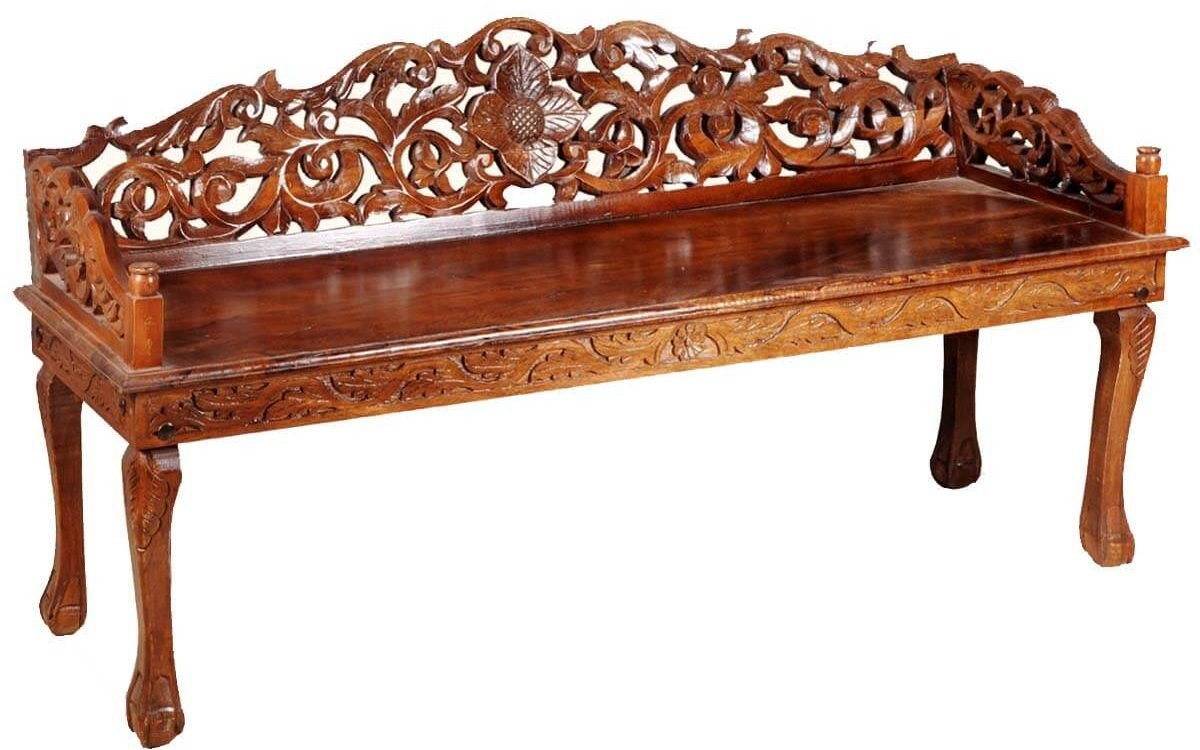
Victorian furniture makes a statement. No question about it.
This style dominated homes for 70 years. There’s a good reason why it lasted so long.
You’ll recognize Victorian pieces instantly:
- Bulky and substantial furniture pieces with dark finishes
- Heavy ornamentation with foliage carvings
- Specific decorative motifs: crockets, trefoils, and quatrefoils
- Velvet and leather upholstery materials
- Use of walnut, mahogany, and rosewood
Think big. Think bold. Think of furniture that commands attention.
I’ve touched Victorian pieces that weigh more than my car. They’re built to last centuries.
How do you use Victorian furniture today?
- Statement pieces in modern settings
- Restoration and reproduction options are available
- Ideal for creating dramatic focal points
One Victorian armchair can transform your entire living room. You don’t need a whole set.
Mix Victorian with clean lines. The contrast creates visual interest that modern rooms often lack.
3. Art Deco Style (1910-1940)
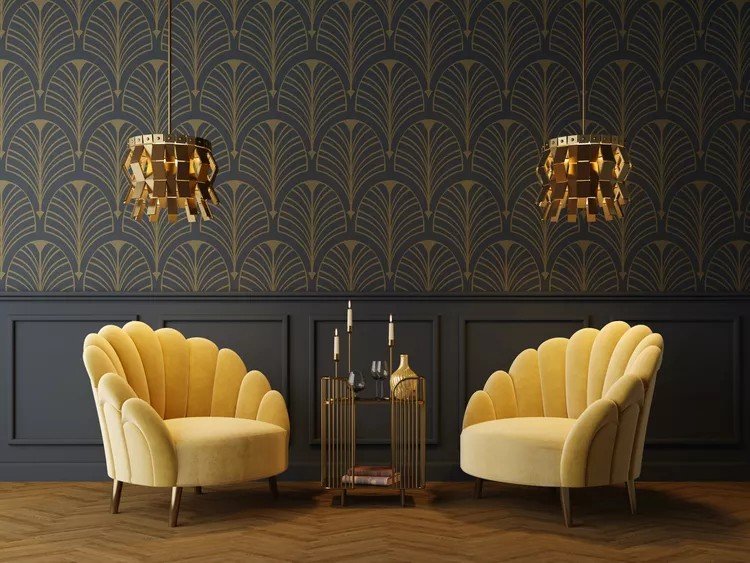
Art Deco screams glamour. Pure and simple.
This style came from the Jazz Age. You can feel the energy in every piece.
Art Deco furniture stands out with these features:
- Bold geometric shapes and symmetrical patterns
- Luxurious materials: exotic woods, metals, chrome, and brass
- High-gloss finishes and lacquered surfaces
- Vibrant jewel tones: emerald green, sapphire blue, ruby red
- Sunburst, chevron, and zigzag motifs
- Integration of mirrors and reflective surfaces
Think of old Hollywood movies. That’s Art Deco.
I’ve seen Art Deco pieces that sparkle under lights. The chrome and mirrors catch everything.
Art Deco doesn’t whisper. It shouts.
You’ll find sharp angles everywhere. Soft curves? Not here. This style loves straight lines and dramatic contrasts.
One Art Deco piece transforms any room. A single mirror or side table brings instant sophistication. You don’t need much to make an impact.
4. Mid-Century Modern Style (1933-1965)
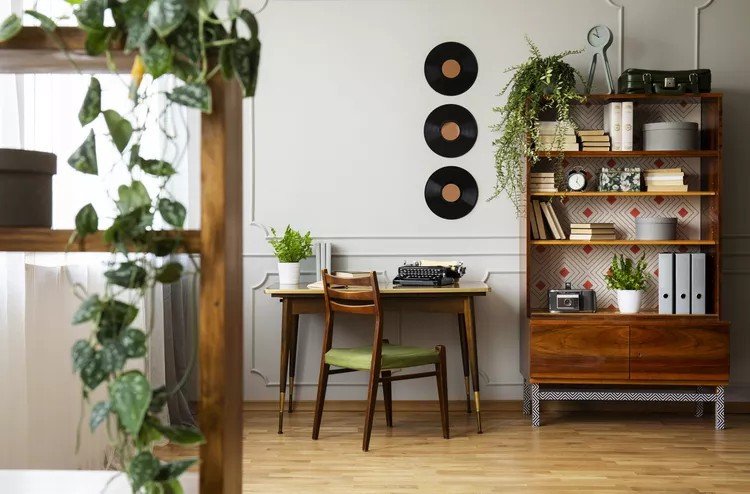
Mid-century modern never gets old. I see it everywhere today.
This style changed how we think about furniture. Less became more.
Here’s what makes mid-century modern special:
- Clean lines with minimal ornamentation
- Organic forms and natural material integration
- Mixed materials: wood, glass, steel, vinyl, molded plywood
- Tapered legs and geometric shapes
- Popular wood choices: teak, walnut, oak, and beech
- Bold color palettes: mustard yellow, avocado green, burnt orange
Function meets beauty. Every piece serves a purpose.
I love how mid-century furniture feels light and airy. There are no heavy, bulky pieces here.
These classics defined the era:
- Eames Lounge Chair and Ottoman
- Barcelona Chair by Mies van der Rohe
- Tulip Table by Eero Saarinen
- Wassily Chair by Marcel Breuer
You’ve probably seen these pieces in movies or magazines. They’re design legends for a good reason.
5. Contemporary Style
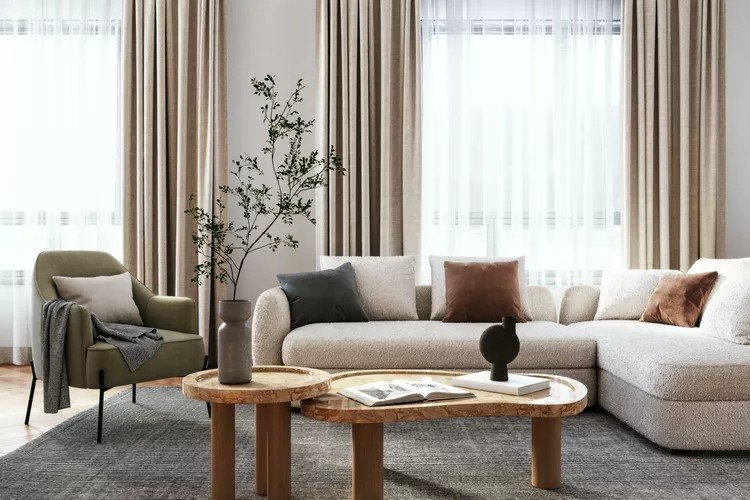
Contemporary furniture lives in the now. It changes with the times.
This isn’t the same as modern furniture. Contemporary means what’s popular today.
Contemporary pieces share these traits:
- Clean, uncluttered lines and smooth surfaces
- Neutral and monochromatic color schemes
- Sleek, lightweight appearance
- Minimal ornamentation with bold accent pieces
- Use of materials: metal, glass, concrete, natural wood
- Curved lines and geometric forms
Think of a blank canvas. Contemporary furniture gives you room to breathe.
I see contemporary pieces that look almost invisible. They don’t compete for attention.
The beauty comes from simplicity.
Why do people love contemporary style?
- Easy integration with other design styles
- Flexibility for changing trends and preferences
- Adaptable to various room sizes and functions
You can mix contemporary with anything. Victorian chair? Sure. Art Deco mirror? Perfect.
Contemporary furniture grows with you. Change your mind? No problem.
6. Minimalist Style
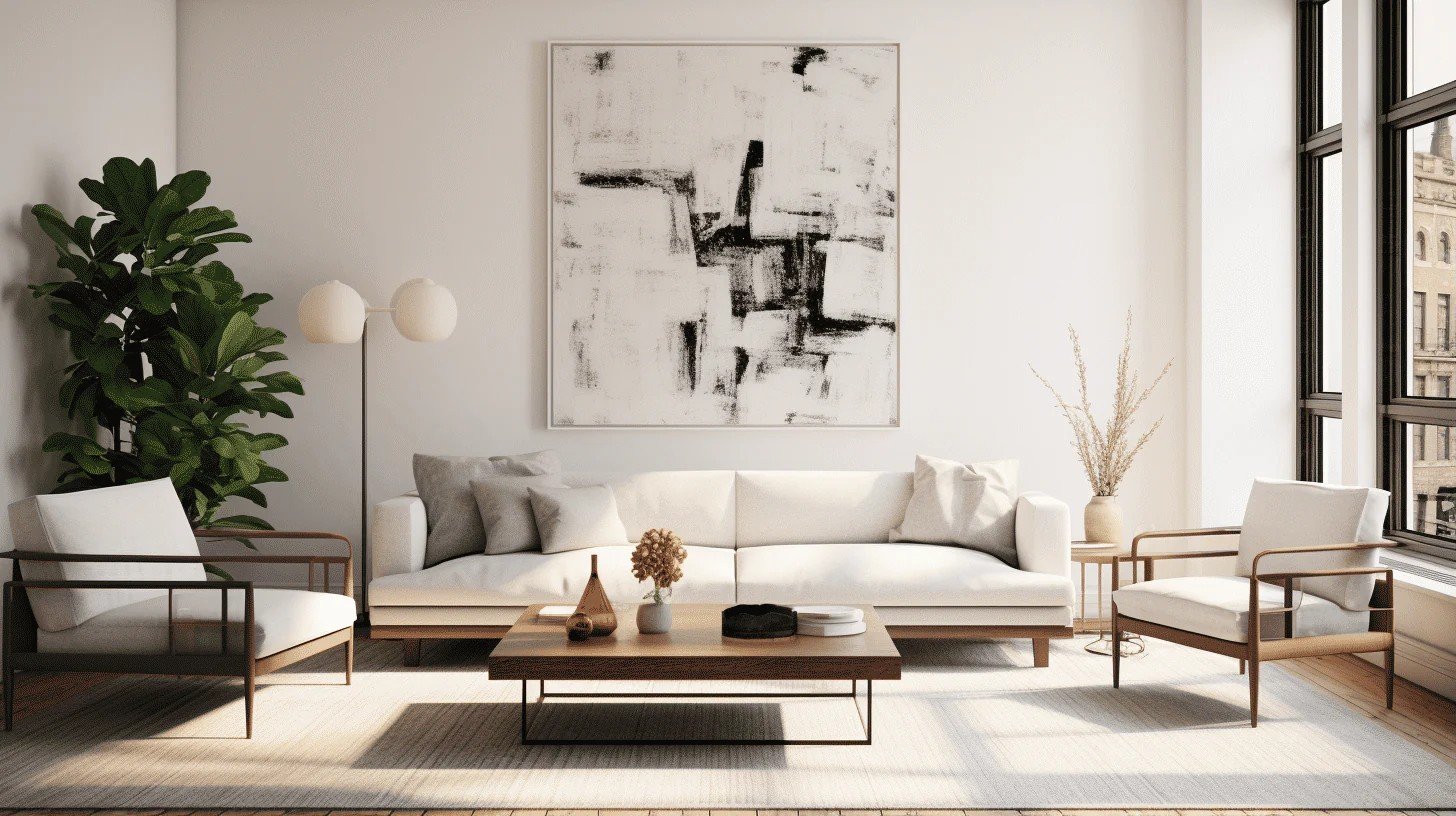
Less is more. That’s minimalism in three words.
This style strips away everything extra. What’s left? Pure function and form.
Minimalist furniture follows strict rules:
- Utilitarian design with rounded shapes
- Absence of intricate carvings or decorations
- Neutral color palette: gray, black, white, brown
- Clean lines and basic geometric forms
- Emphasis on negative space and functionality
Every piece serves a purpose. No decoration for decoration’s sake.
I’ve been in minimalist homes that feel like meditation spaces. The silence speaks volumes.
Your eye finds peace here.
Minimalist furniture changes how you live:
- Promotes mental clarity and calm environments
- Encourages mindful living and organization
- Practical storage solutions integrated into the design
Less stuff means less stress. I see this with my clients all the time.
You buy fewer pieces. But each one works harder. Quality over quantity becomes your new rule.
Minimalist furniture makes small spaces feel huge.
7. Scandinavian Style (1930-1950)
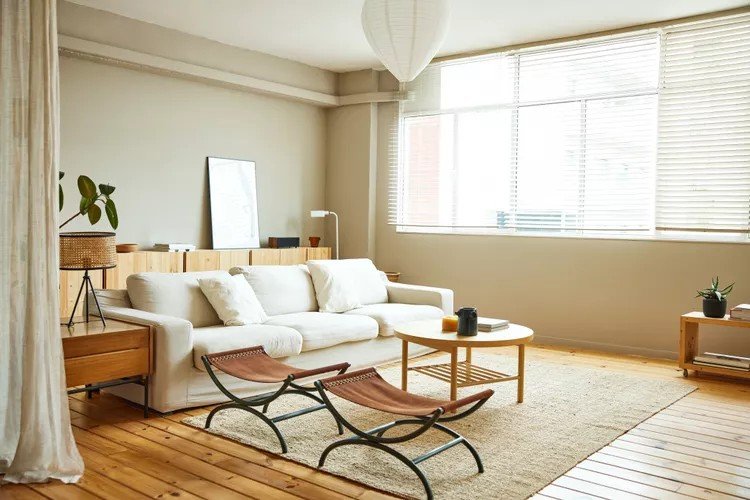
Scandinavian furniture feels like a warm hug. That’s the best way I can describe it.
This style came from Nordic countries. Long winters taught them about comfort.
Scandinavian design centres on these ideas:
- Simplicity, functionality, and minimalism
- Natural materials with an emphasis on light-coloured wood
- Neutral color palettes with occasional pops of color
- Maximization of natural light
- Concept of “hygge” – cosiness and comfort
Think cosy cabin meets the modern city. The function never fights beauty here.
I love how Scandinavian pieces make any room feel bigger and brighter.
Light wood changes everything.
The materials tell the whole story:
- High-quality natural wood construction
- Integration of textiles: wool, linen, cotton
- Sustainable and eco-friendly practices
- Emphasis on skilled craftsmanship
You can feel the quality when you touch these pieces. No shortcuts. No fake materials.
Scandinavian furniture lasts for generations. That’s the point.
8. Industrial Style
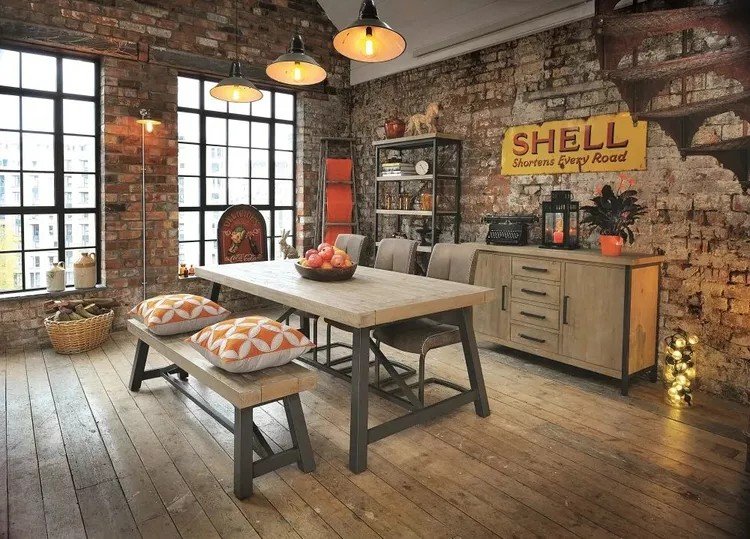
Industrial furniture celebrates the rough edges. Nothing gets hidden here.
This style came from old factories and warehouses. Function ruled everything.
Industrial pieces show their bones:
- Exposed structural elements: pipes, ductwork, brick walls
- Raw materials: reclaimed wood, metal, concrete
- Weathered surfaces and visible construction elements
- Neutral color palette: greys, blacks, browns, whites
You see every bolt. Every weld mark. That’s the whole point.
I’ve touched industrial tables that still smell like the old factory. History lives in the woods.
Imperfection becomes perfection.
Industrial design follows simple rules:
- Beauty in functionality and imperfection
- Integration of vintage and salvaged elements
- Bold, statement lighting fixtures
- Celebration of raw, unfinished aesthetics
Think exposed brick meets steel beams. There are no pretty paint jobs here.
Industrial furniture tells stories. Each scratch and dent adds character. You’re not buying furniture – you’re buying history.
9. Rustic Style
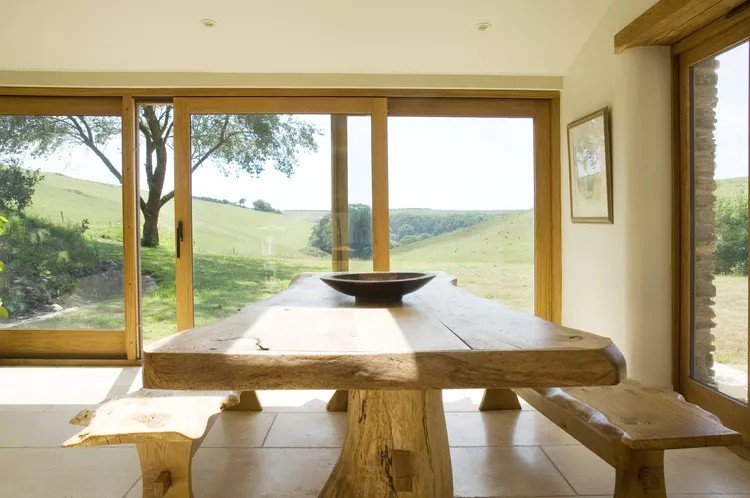
Rustic furniture brings the outdoors inside. You can almost smell the forest.
This style loves everything natural and imperfect. Machine-made? Not here.
Rustic pieces celebrate raw materials:
- Unrefined wood showcasing natural grains and imperfections
- Natural finishing methods: milk paint, chip carving
- Use of reclaimed and weathered materials
- Integration of leather and natural textiles
Every knot in the wood tells a story. The rougher, the better.
I’ve seen rustic tables made from barn doors. Coffee rings and scratches become part of the charm.
Nature doesn’t make straight lines.
Rustic furniture creates special feelings:
- Warm, inviting spaces with handcrafted elements
- Connection between indoor and outdoor environments
- Emphasis on comfort and authenticity
Think cosy cabin after a long hike. Everything feels handmade and honest.
Rustic furniture makes you want to slow down. Pour some coffee. Forget about perfect corners and smooth surfaces. Beauty lives in the flaws.
10. Transitional Style (1950s)
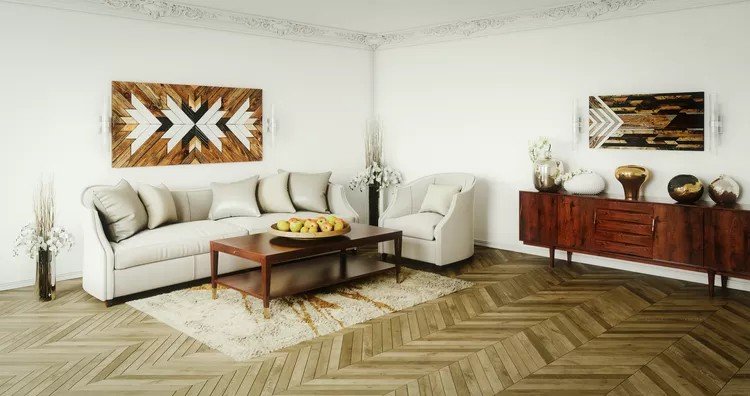
Transitional furniture plays it safe. And that’s precisely why it works.
This style bridges old and new. There are no extreme choices here.
Transitional pieces find the middle ground:
- Fusion of traditional and contemporary elements
- Simple colour schemes with neutral foundations
- Minimal ornamentation with strategic details
- Clean lines without excessive decoration
Think of it as traditional furniture on a diet: all the comfort, half the fuss.
I see transitional pieces in homes where couples can’t agree on style. He wants to be modern. She wants tradition. Problem solved. Everyone stays happy.
Transitional style mixes everything:
- Combination of wood, metal, glass, and fabric
- Mirrored and glass surfaces for light reflection
- Varied fabric patterns and luxurious details
- Focus on comfort and functionality
You get the best of both worlds. Classic shapes meet modern materials.
Transitional furniture grows with you. Change your mind? The style adapts.
11. Eclectic Style
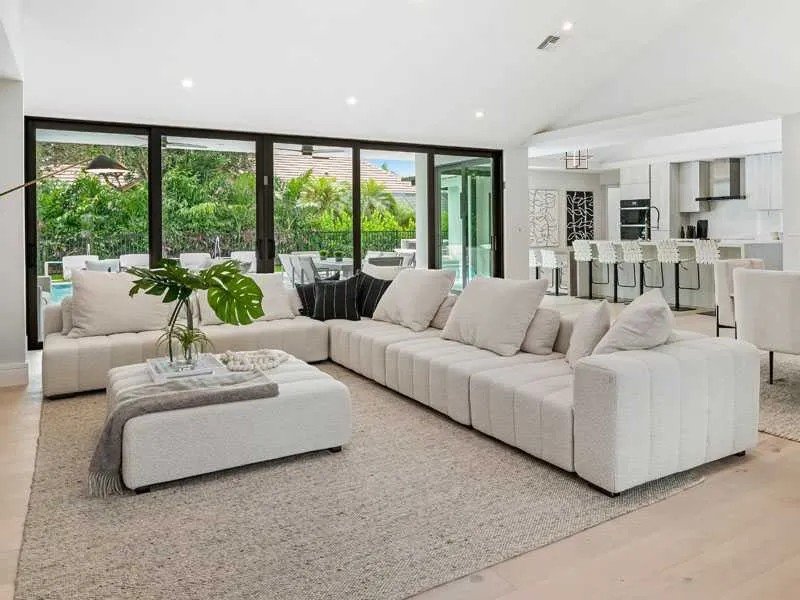
Eclectic style breaks all the rules. Then it makes new ones.
This approach mixes everything. The key? Make it look intentional.
The eclectic design gives you total control:
- A mix-and-match approach combining various periods
- Thoughtful curation despite apparent variety
- Use of personal items and meaningful objects
- Neutral base with bold accent elements
Do Victorian chairs meet modern lamps? Perfect. Art Deco mirror with rustic table? Why not?
I love eclectic rooms because they tell your whole story. Every piece has meaning.
Your grandmother’s china sits next to your vintage record player.
Making eclectic work takes skill:
- Bold use of contrasting colours and patterns
- Layering of different textures and materials
- Strategic placement of statement pieces
- The balance between variety and visual harmony
The trick is knowing when to stop. Too much becomes chaos.
Eclectic style requires confidence. You’re not following trends. You’re creating your own.
One rule applies: if you love it, it belongs.
Conclusion
Now you know the 11 styles of furniture that never go out of fashion. From Victorian’s bold statements to minimalist’s clean simplicity, each style serves different needs and personalities.
You’re ready to shop with confidence-no more second-guessing or buyer’s remorse. You understand what makes each style special and how it fits your space.
Remember, there’s no wrong choice here. Your home should reflect you. Mix styles if you want. Stick to one if that feels right.
Start with one piece you love. Build from there. Let your style grow naturally.
What style speaks to you most? Drop a comment below and tell me which one caught your attention. I’d love to hear about your furniture finds and see how you make these styles work in your home. Happy furniture hunting!
Frequently Asked Questions
What are the most popular styles of furniture for modern homes?
Mid-century modern, contemporary, and Scandinavian styles work best in modern homes. These styles feature clean lines, neutral colours, and functional designs that fit today’s lifestyle while remaining timeless.
How do I choose the right furniture style for my space?
Consider your lifestyle, room size, and personal preferences. Traditional and Victorian work well in formal spaces, while minimalist and contemporary styles suit smaller areas. Mix styles if you prefer an eclectic approach.
Can I mix different styles of furniture in one room?
Yes, mixing furniture styles creates visual interest. Use a neutral base colour and choose one dominant style, then add accent pieces from other styles. Transitional and eclectic approaches specifically embrace this mixing.
Which furniture styles hold their value best over time?
Traditional, mid-century modern, and Scandinavian styles retain value well. These styles have proven staying power and appeal to many buyers, making them wise investment choices for your home.
What’s the difference between modern and contemporary furniture styles?
Modern refers to mid-century pieces from 1933-1965 with specific design elements. Contemporary means current trends and changes over time. Modern is a fixed historical style; contemporary evolves with current preferences.

